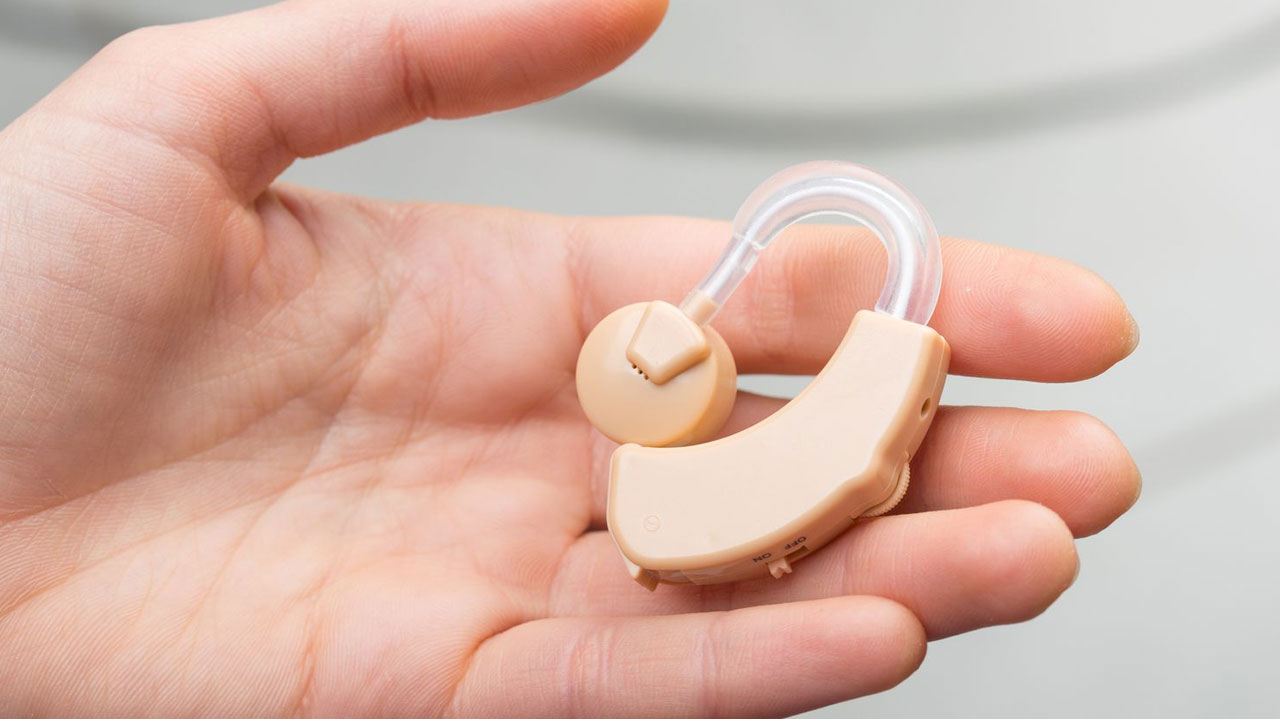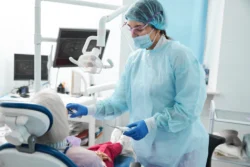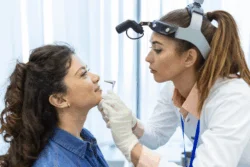Hearing loss can affect your quality of life and interfere with communication. The right treatment depends on the severity and underlying cause of your hearing loss.
Some hearing losses caused by problems in the outer or middle ear can be reversed. For example, if the stapes bone in your middle ear doesn’t vibrate properly due to otosclerosis, a procedure called a stapedotomy can restore hearing.
Earwax Removal
When too much earwax is present, causing an ear canal blockage, it can be difficult to remove. However, removing too much earwax can actually harm your hearing, which is why you should only use safe earwax removal methods.
Earwax is an essential part of the ear’s natural cleaning process. Earwax is produced in the ears’ ear canals by glands and then naturally makes its way through the ear, opening into the eardrum, where it falls out or is washed away. When earwax is not removed properly, it can build up and block the ear canal, leading to pain, itching, and partial hearing loss.
If you want to remove earwax from your ears, it’s best to see a doctor or an otolaryngologist. They will be able to prescribe safe earwax-removal drops or a saline solution that can soften the wax and make it easier for it to fall out on its own.
There are also a few safe at-home earwax-removal products. One option is to use a homemade eardrop solution of 15% baking soda mixed with water. Another option is to buy a drug store-brand product, such as Debrox, which contains carbamide peroxide, a clinically proven earwax removal medicine. To use these earwax removal drops, simply lie down and place 5 drops in your ear canal two times daily for four days.
While some individuals may try to remove earwax on their own using foreign objects like cotton swabs, these efforts often backfire and can lead to a painful earwax blockage or cerumen impaction. It is safer to let a Houston ENT doctor perform this procedure since the ear canal and eardrum are delicate and can be damaged by improper at-home earwax removal techniques.
If you do experience a symptom of an earwax blockage, such as a full sensation in the ears or muffled hearing, it’s best to see a Houston ENT right away. They can prescribe a medication to help soften the earwax or remove it in a simple office procedure. Regardless of what treatment method is used, a doctor can help restore your hearing and comfort so you can get back to your normal life activities.
Hearing Aids
A hearing specialist, known as an audiologist, can help you find the best treatment option for your specific hearing loss. The most common type of hearing loss is sensorineural, caused by damage to inner ear hair cells and auditory nerve. This type of hearing loss is permanent; once damaged, these cells can’t be repaired. Most people with sensorineural hearing loss get relief from wearing a hearing aid, which amplifies sounds to make them easier to hear.
Another effective treatment is assistive listening devices, which make it easier to watch TV or talk on the phone. These include captioned phones, FM systems, and TV hearing aids that can connect to a telecoil in your hearing aid. Some of these devices are small enough to fit in the ear canal; some can even detect background noise and cancel it out to help you focus on what’s being said.
Conductive hearing loss, when something blocks sound from reaching the middle ear where the three tiny bones (malleolus, incus, and stapes) vibrate to create sound waves, is usually treatable with medicines or surgery. For example, repeated ear infections, fluid in the ears, or using cotton swabs that push earwax deeper into the ear can cause this type of hearing loss. Medications such as antibiotics or corticosteroids can reduce swelling from infection and ease the pain of earwax blockage.
If you have a combination of conductive and sensorineural hearing loss, a doctor can recommend the use of a middle ear implant that bypasses the damaged parts of your inner ear. These devices are inserted through surgery and connect to electrodes that send signals to your auditory nerve, which relays them to your brain.
UCSF Health medical specialists review your symptoms and medical history to diagnose hearing loss. Treatment options depend on the severity of your condition and its underlying cause, as well as your age and lifestyle. Getting a diagnosis and treatment early can improve your quality of life by slowing the progression of hearing loss and reducing the risk of complications such as cognitive decline, depression, and falls.
Hearing Tests
The first step in treating hearing loss is getting a diagnosis. Healthcare providers can offer a variety of tests, depending on the cause of your problem. They might start with a physical exam, looking in your ears for earwax or an infection, and examining the way your ear is formed. They may also offer you a screening test, such as covering one ear at a time while listening to words spoken at various volumes. You can also take an online quiz-based screening test to get a sense of whether you should make an appointment for more rigorous in-person testing.
The next stage is usually a full audiology test called an audiogram. You will be played a series of tones via headphones and asked to raise your hand or press a button each time you hear a sound. This will show which frequencies you can no longer hear. The audiologist will then compare your results to the average for your age group.
This type of hearing test can help determine the cause of your loss, such as conductive or sensorineural. It can also help you decide between a hearing aid and a cochlear implant. In addition, the audiologist can offer auditory training and rehab to help you adjust to your new life with impaired hearing.
There are a variety of causes of hearing loss, including age-related loss, long-term exposure to loud noise (such as music concerts or gun blasts), and congenital conditions like cytomegalovirus. Medical conditions such as high blood pressure, heart disease, or diabetes can also affect your hearing. Certain medications, such as antibiotics, corticosteroids, and narcotics, can also have a negative impact on your hearing.
Some people have hidden hearing loss, which standard tests can’t detect. This is more common in older adults, who are less likely to seek treatment. They might also avoid social events because they find it difficult to communicate, leading to isolation and depression. You can reduce your risk of hidden hearing loss by wearing earplugs at noisy events, using a humidifier, and not prodding your ears with cotton swabs.
Surgery
Hearing loss can leave people feeling disconnected from the world around them, making them irritable or depressed. It can also lead to social isolation, poor grades in school, and even dementia. Fortunately, there are treatments that can help restore and maintain hearing. These treatments range from earwax removal and ear plugs to surgery for a cochlear implant or bone-anchored hearing aid.
The four main types of hearing loss are sensorineural, conductive, mixed, and ANSD (auditory neuropathy spectrum disease). Sensorineural hearing loss happens when the inner ear or acoustic nerve is damaged. Exposure to loud noises, illness (meningitis), use of ototoxic drugs, and age-related issues all can cause sensorineural hearing loss.
Conductive hearing loss occurs when something blocks sound from entering the inner ear. This can be earwax build-up, fluid in the middle ear, or a perforated eardrum. It can also be due to anatomical problems such as otosclerosis or congenital abnormalities like atresia or microtia.
A cochlear implant is a small electronic device that can restore hearing and speech understanding for people who are profoundly or severely deaf or hard of hearing. The implant has a small portion that sits behind the ear, with a second part surgically placed under the skin. TriHealth board-certified otolaryngologists and audiologists work together to coordinate the surgical care and therapy needed for patients who receive a cochlear implant.
Lastly, mixed hearing loss can occur when both sensorineural and conductive problems exist. This usually means that hair cells in the inner ear are damaged, but something is preventing sound from being sent to the acoustic nerve. This is commonly caused by aging or exposure to loud noises.
The best treatment for mixed hearing loss is a combination of therapies, depending on the specific causes. These might include hearing aids, a baffle, or a bone-anchored implant, as well as auditory training or rehab. These are exercises that can help the brain relearn how to process sound and can help reduce symptoms such as listening fatigue. This can also be helpful for children who have difficulty learning a language due to hearing loss.







